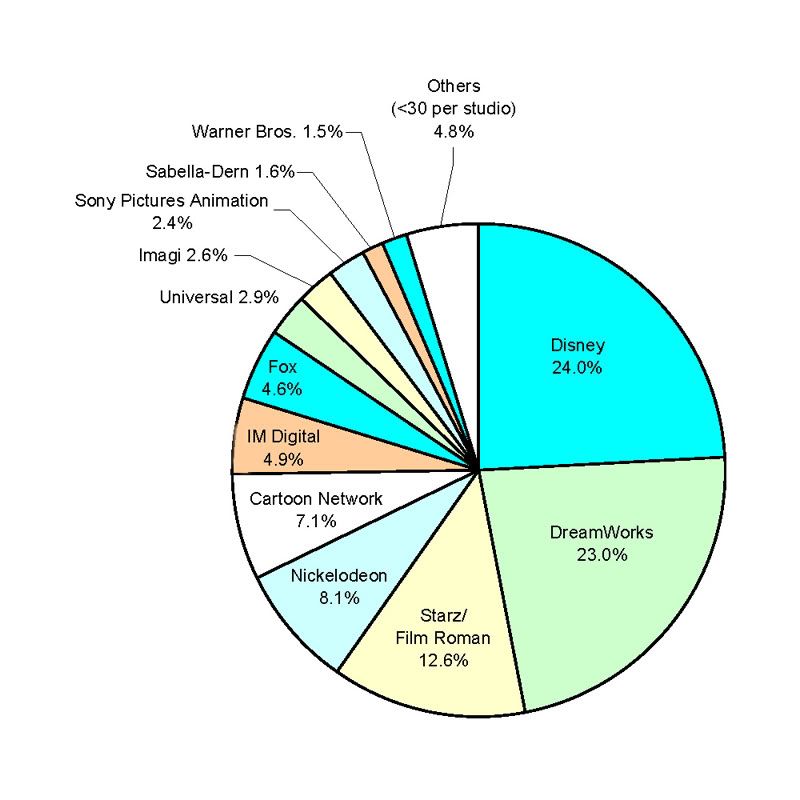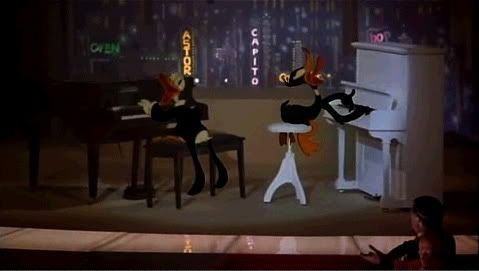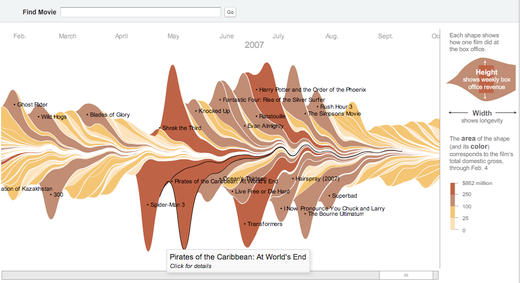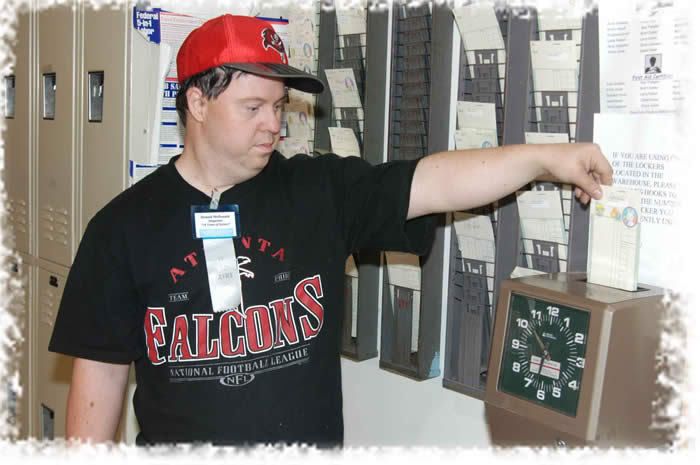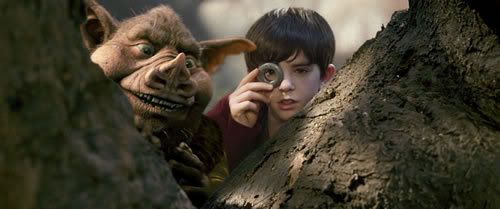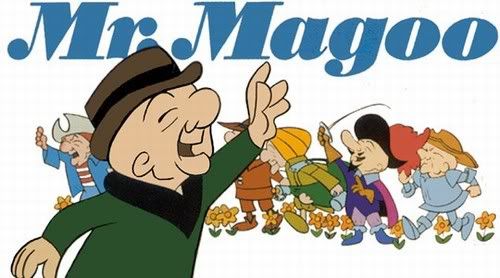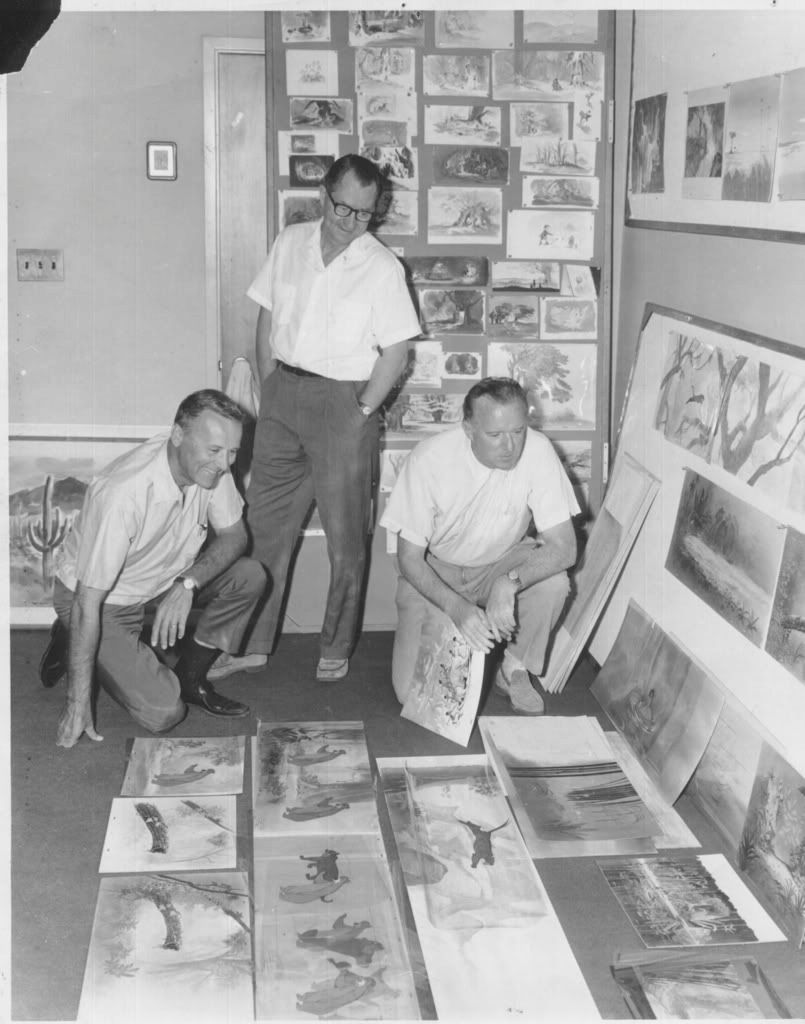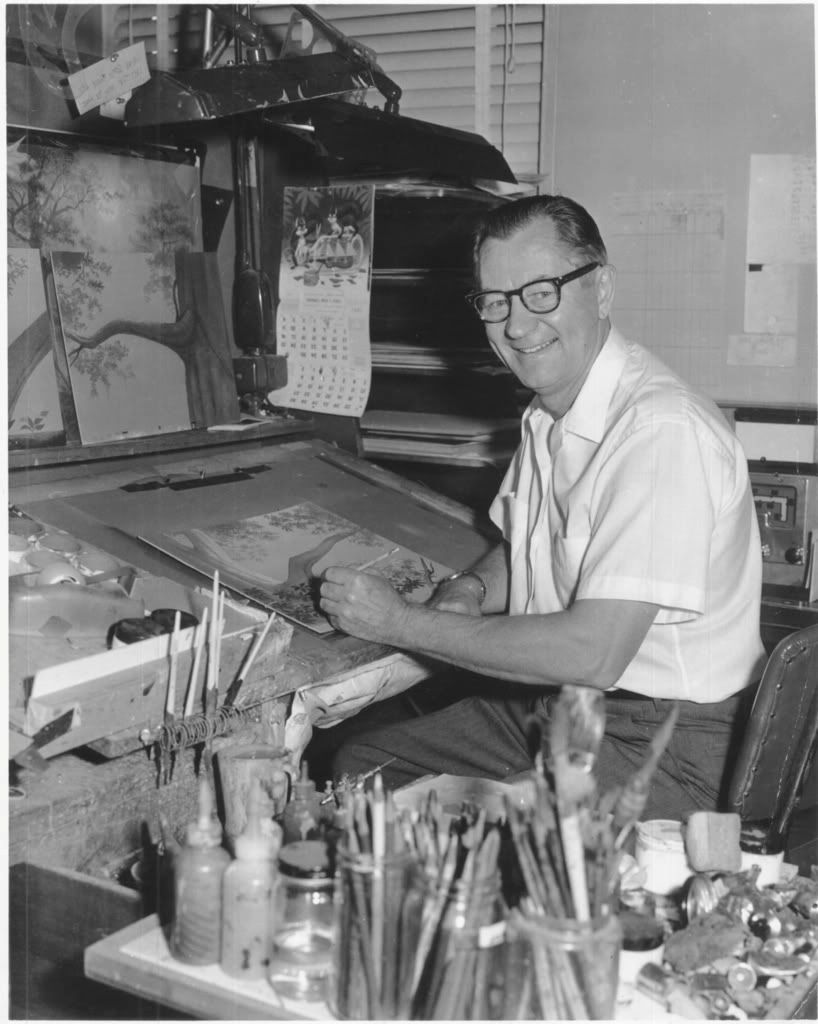
DreamWorks rides the big green ogre to a profitable fourth quarter:
DreamWorks Animation SKG returned to a profit in the fourth quarter on strong home video sales of "Shrek the Third" and the absence of the year earlier's big write-down.
The animation studio reported net income of $94.1 million, or 98 cents a share, compared with a net loss of $21.3 million, or 20 cents a share, a year earlier.
We've touched on this before, but Ultimate Disney has a fine, comprehensive review of Academy Award Winning Shorts and Nominees (of the non-Disney variety) through the ages:
...While Disney would earn every one of the [1930's] Cartoon Short Subjects Academy Awards, other animation departments would eventually taste glory and, before that, regularly received nominations. More importantly, they offered something different and well-liked in its own right.
Bugs Bunny may a look a little different than usual, but he acts the same smart-alecky way in "A Wild Hare", his very first cartoon. Here, he addresses the viewer directly with some thoughts on Elmer Fudd. Jerry has nowhere to run as Tom grabs him by the tail. The Oscar-nominated "Puss Gets the Boot" marks the pair's debut (when Jerry was being called Jasper). It is one of thirteen Tom and Jerry shorts on this new DVD collection.
For Paramount Pictures, Max Fleischer and his brother Dave scored hits with Betty Boop, Popeye the Sailor, and later Superman. Warner Bros. began rising the ranks with their concurrent series Looney Tunes and Merrie Melodies, initially under the direction of Disney emigrants Hugh Harman and Rudolf Ising. Beginning in 1940, MGM had the popular line of Tom and Jerry cartoons, made by future TV animation titans William Hanna and Joseph Barbera. Columbia Pictures' Screen Gems division had Charles Mintz, while Universal had Walter Lantz, who would go on to develop Woody Woodpecker ...
While we're on the subject of new DVD releases, Disney has a new edition of their '61 mega-hit 101 Dalmations:
This is the 11th Disney animated film to be released as a “Platinum Edition.” It is a very impressive 2-disc set that presents the film beautifully and provides all the extras needed to enhance the experience. Some filler does exist, but it’s limited and some of it even has its own charms ...
Despite the lousy quality of the games, the rest of the DVD is terrific. It presents the movie in a clear, ageless picture with good sound quality. The extras enhance your watching experience and are fairly easy to navigate, even for younger kids ...
To nobody's surprise, there was a lot of money changing hands in the recent battle of high def formats:
Dreamworks Animation Confirms: Payoffs Pressured Format War ...
Dreamwork’s humble claim about “compensation” for the support was rumoured to be as high as $150 million, which HD DVD promotional group provided to Paramount Pictures and Viacom.
But the Blu-ray camp may also not be totally fair. Various rumours around the Internet claimed that the Blu-ray disc Association provided “incentives” worth $500 - $620 million to Time Warner, the parent company or several studios, including Warner Bros. and New Line Cinema, but Time Warner denied those allegations. Another rumour suggests that Warner’s Blu-ray exclusivity would only last till Q1 2009 and that the company got $450 million for that.
And DreamWorks contractual commitment with Toshiba raises a few complications in the high definition area of DVD land:
"We have a partnership with Toshiba and have an obligation to see this through," DreamWorks Chief Executive Jeffrey Katzenberg said on Tuesday.
"As you know, we have been well-compensated for our support. It really is in their court at this point to really declare what the next step will be. We're poised either way to jump into the marketplace when the conditions are right to do so ..."
"We said, we have a release coming up on 'Bee Movie.' What would you like us to do?" ...
The Animation Biz circa 1942 ... as told by BOY COMICS. (A week old ASIFA post, but I link anyway) ...
The L.A. Times reviews a USC film festival that highlights features from southern and eastern Europe this weekend, including this:
"We have an animated ghetto movie full of hip-hop, and that's something very new coming out of Eastern Europe," Imre says.
She's referring to the Hungarian feature "The District," a senses-scorcher that starts like a rap-infused "West Side Story" set among teen gangs before it transforms into a time-travel satire of globalization involving woolly mammoths, inner-city oil derricks and prostitute spies controlled by Vladimir Putin. If a society's confusion ever dictated a cinematic style, it's here: Old and new technologies -- including the cutout and the computer-generated -- combine for a psychotically textured urban cartoon. (Want more animated fare? There's also a program of Eastern European shorts from pre- and post-Soviet years.)
While on the subject of European film fests, Animation Magazine highlights the big animation showcase happening in Potsdam and Babelsberg March 5th through the 7th:
If you happen to be in Germany next week and would like to take a sneak peek of what the European animated feature film community has to offer, you should definitely check out the tenth edition of Cartoon Movie (March 5-7) in Potsdam/Babelsberg
.Kicking off this year’s lineup is a special presentation of Futurikon/Luxanimation’s Dragon Hunters, the CG feature spin off of the animated series, directed by Guillaume Ivernel and Arthur Qwak ...
Lastly. Disney Pixar unveils the first Wall*E Poster to a waiting world:
THE SKINNY: Ain't It Cool News got the scoop on the Pixar/Disney animated robot film, WALL*E, releasing a poster for the summer 2008 film.
Have a productive and healthful weekend.
Click here to read entire post
